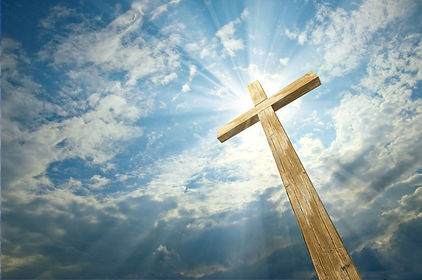A Foundation through Faith
The Odum property also enabled the Association to provide a home for Indian orphan children. In 1928 and 1929, the Association began in earnest to pursue this project. Miss Livermore maintained a strong commitment to the endeavor and voiced concern among White Baptists as well as to county and state political leaders. "With the assistance of Miss Margaret Holmes, the county’s Indian Social Case Worker, Livermore was successful in establishing the Indian Child Welfare Association in 1939 and the Mother’s Aid Society." Grass roots efforts increased. Rev. C.E. Locklear brought a stirring charge to the Association that led to a decision to go forward. "
There are at present several orphan children and several mothers with children within the bounds of the Burnt Swamp Baptist Association who sorely need our help. Many of them have no schooling; they do not attend church, and some of them are being used almost as slaves. They are being brought up in the world without a chance. May the God of the widow and the orphan help us to hear the cry of these little ones saying, ‘Come and help us’." The concern persisted and reports at Association annual meetings tracked the slow but deliberate progress of getting the orphan home established. Led by Rev. L.W. Jacobs, an icon among Burnt Swamp leaders, the Association initiated fund-raising among both Indian and White churches. Finally in 1942, the Odum Home Orphanage opened its doors to four girls as the first residents. The boys’ cottage followed a few years later and an Indian orphanage supported by community contributions was in business.
Though the ministry struggled to survive, it was the result of a cooperative effort by both Burnt Swamp and Robeson Association (White) churches. Sacrificial local commitment to the success of the children’s ministry kept the doors open. Baptists across the state kept an eye on the Indian orphanage and grew concerned about helping with the great need of providing for the homeless children. In 1958, Odum Home became a ministry of the Baptist Children Homes of North Carolina and remains as such.
Our Mission Development and Growth
Outreach beyond the Robeson county area was already a course and commitment of the Association by the early 1900’s. The Association defined itself as an Association of Indian churches from beginning and changes to the Association Constitution reinforced it in the 1910 Annual. "This association shall be composed of members chosen by the different churches in our union, who shall be known, designated and styled as Indians or lineal descendants of Indians, and duly sent to represent them in the association who shall be members, who they judge best qualified for that purpose and producing letters form their respective churches certifying their appointment as delegates." Many new churches resulted from mission efforts locally.
A Domestic Mission Board and local missionary involvement led by women brought growth in Christian missions in communities beyond Robeson County. Teachers from Robeson County gained opportunity in other tribal communities outside Robeson county and new relationships formed among several tribes. This too improved the influence of Burnt Swamp Association beyond the Lumbee people. The Association promoted the partnership between the church and the school to raise the quality of Indian community life.
The increase of Indian schools never diminished the desire that Indian ministers also be well trained. Association annual reports called upon ministers to seek training and particularly in the Word of God. At the 1917 Annual Meeting, the Association called for a committee to pursue establishing a Christian training center for Indian churches. Soon, others joined in the effort to provide Christian training for Indian ministers and church leaders. A White mail carrier, Mr. E.L. Odum, showed interest in assisting in this effort by providing land in Pembroke for the establishment of a training school for church leaders and a site for an Indian orphanage. His offer inspired support from the Livermore family, a local White family that owned most of the business enterprise that served Indians in the Pembroke vicinity. Mary Livermore, a woman of great passion and concern for Indians, became a significant voice for the Burnt Swamp Association. "A diary she kept during the early 1900’s reflects much of her own impressions of the times and turmoil in Robeson County and of her attempts to assist Indian friends in church, school, and orphan work. She was well aware of the need for an orphanage among the Indian population in the state. At that time no state orphanage facilities were open to people of color, including Indians. Odum proposed a willingness to donate a 57 and one/half acre tract he owned in the Pembroke area for the purpose of an Indian orphanage and ministers’ training school. Upon hearing of Odum’s offer, Livermore quickly shared Odum’s interest with the association ministers, and (though years would pass before total fruition of his desire) a dream began."
The 1920’s gave increasing focus upon establishing both a Christian training school and an Indian orphanage. Funds from churches and support from the Southern Baptist Home Mission Board made the dream for a training school a reality in 1922. For several reasons, the success of the training center was short lived. Harsh travel conditions across considerable distance posed a significant challenge for prospective students. In addition, a growing skepticism toward "educated" preachers weakened enthusiasm for the training school. At the same time that interest waned in the training center, local Pembroke community people started using the training center facility for regular worship. The training center closed in 1926 but the facility continued to serve the Association as a meeting place for workshops and conferences for the churches.
Local Christians organized the Berea Church and began meeting in the training center building soon after the center closed. The church eventually took possession of the facility.


